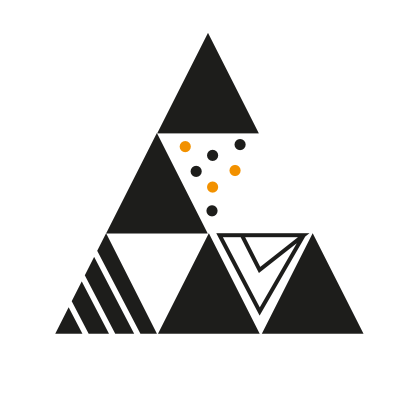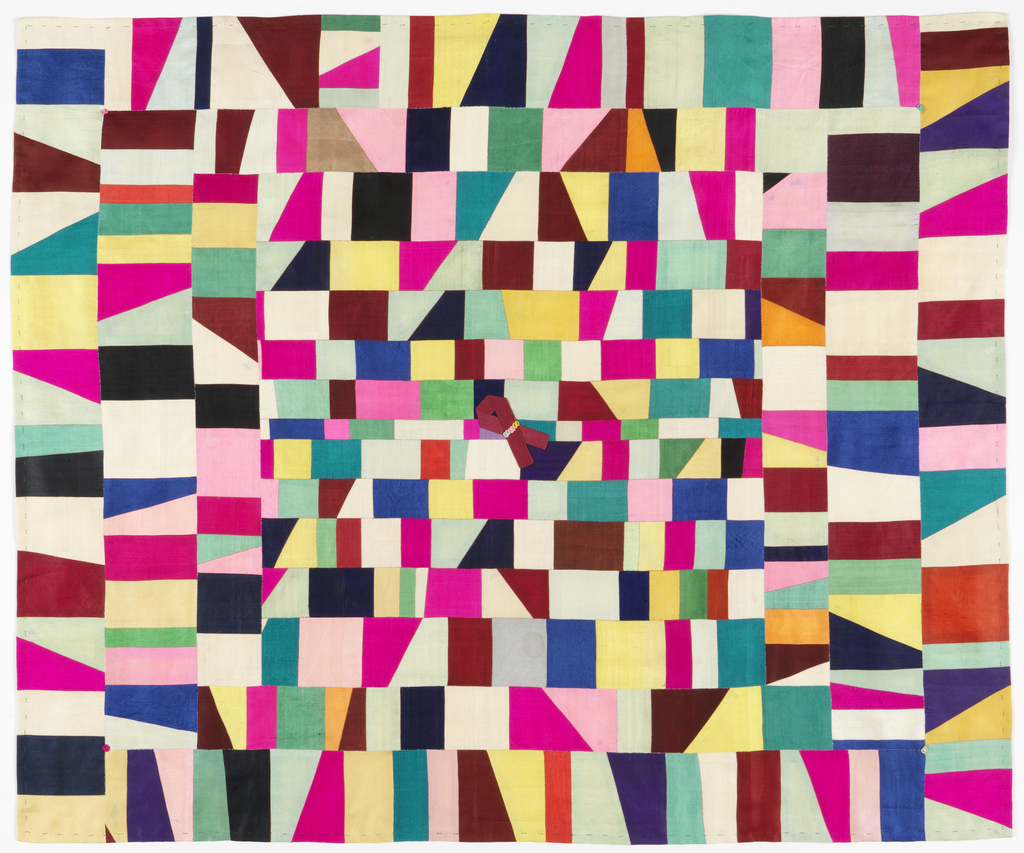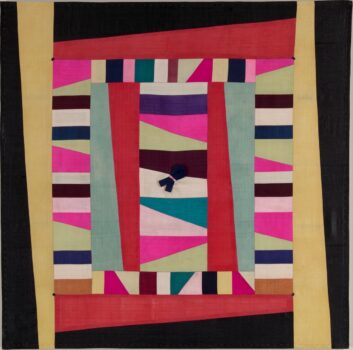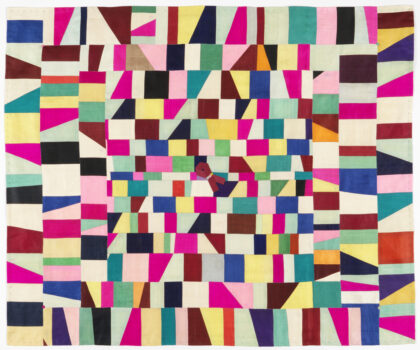Technique
Jogakbo is typically made up of scraps of a single type of fabric, such as cotton, silk, ramie (a lustrous plant fiber native to eastern Asia), hemp, or even paper. The scraps are joined using a triple-stitched seaming technique known as gekki, which creates a flat, sealed seam and gives the jogakbo its distinctive "window pane" appearance. Patches are joined into squares and extended in an improvisational, irregular fashion until the cloth reaches the desired size. A jogakbo can feature several colors to create a modern abstract pattern or be made in a single color, as is the case with an elegant piece in our collection dating back to the 1940s.
Application
The finished piece is often used as a wrapping cloth for food or gifts, or as a decorative wall hanging. Traditionally, Jogakbo was made using scraps of fabric left over from making clothing or household items, and was considered a way to make practical use of materials that might otherwise go to waste. Today, Jogakbo continues to be popular as a form of traditional Korean art and craft.
Origin
The practice of making wrapping cloths has a long history in Korea, and during the Joseon dynasty (1392-1910), women who were excluded from formal education focused on domestic tasks such as weaving and embroidery. They created costumes, bedding, and wrapping cloths for the household, and in line with the dynasty's values of frugality and simplicity, they repurposed leftover fabrics by patching them together into larger squares or rectangles to make jogakbo.




